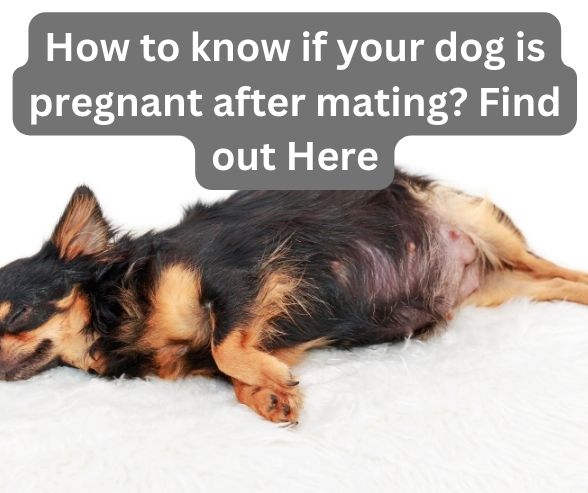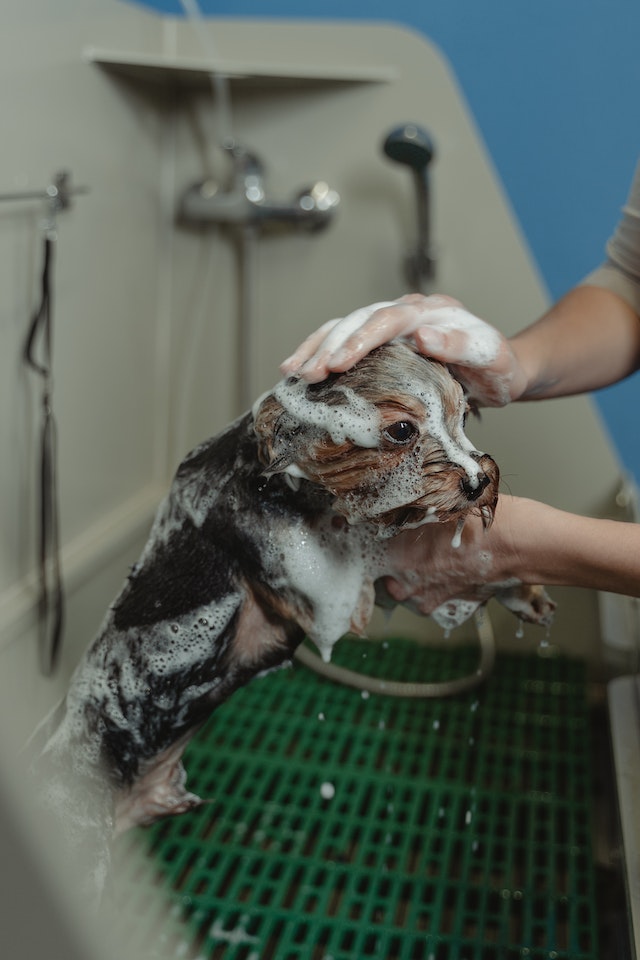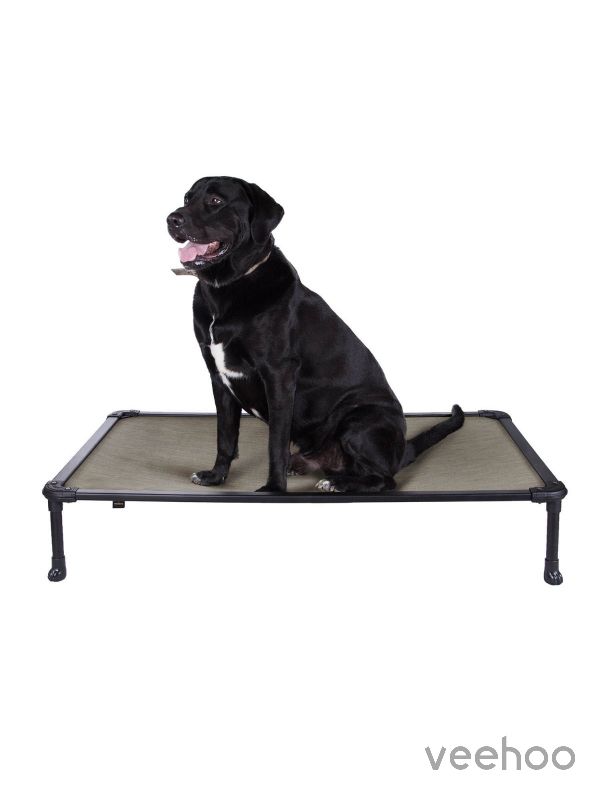Why Do Goldendoodles Pant So Much? Ultimate Guide For Dog Owners
Goldendoodles are adorable and popular hybrid dogs, known for their friendly nature and low-shedding coats. However, if you own a Goldendoodle or are considering getting one, you may have noticed that they tend to pant more than other dog breeds. In this article, we will explore the reasons behind why do Goldendoodles pant so much and what it means for their health and well-being. So, let’s dive in and uncover the fascinating world of Goldendoodle panting!
Introduction: The Wonderful World of Goldendoodles
Goldendoodles are a crossbreed between Golden Retrievers and Poodles. They inherit the best traits from both parent breeds, resulting in a loyal, intelligent, and affectionate companion. Goldendoodles are also known for their hypoallergenic coats, making them a popular choice for people with allergies. However, one common observation among Goldendoodle owners is that their furry friends seem to pant more frequently than other dogs.
Goldendoodles’ Origin and Popularity
Goldendoodles, a delightful blend of the loyal Golden Retriever and the intelligent Poodle, emerged in the 1990s. Their inception was driven by a desire for hypoallergenic guide dogs. Over time, their low-shedding coats, friendly disposition, and charming aesthetics have made them a favorite among families, especially those with allergy sufferers. Their rapid rise in popularity can be attributed to their versatility as both service animals and loving companions.
Understanding Panting in Dogs
Panting is a natural behavior in dogs and serves various purposes. Dogs don’t have sweat glands like humans, so panting helps them regulate their body temperature. It’s their way of cooling down when they become overheated. Additionally, panting can be a sign of excitement, stress, anxiety, or even pain. By paying attention to your Goldendoodle’s panting patterns, you can gain valuable insights into their well-being.
Common Misconceptions about Panting
A prevalent misconception is that panting solely indicates a dog’s thirst or overheating. While these are common reasons, panting can also be a sign of pain, anxiety, or certain medical conditions. Another myth is that frequent panting is normal for all breeds. However, panting patterns can vary based on breed, age, and health. It’s essential to understand these nuances to ensure a dog’s well-being.
Comparison with Other Breeds
Goldendoodles often pant more than some other breeds due to their thick coats and active nature. In contrast, breeds with shorter or thinner coats, like the Greyhound or the Chihuahua, might pant less frequently under similar conditions. However, breeds like the Bulldog or Pug, with their flat faces, might pant more due to respiratory challenges. It’s crucial to understand that each breed has its unique characteristics affecting its panting behavior.
Coat and Body Temperature Regulation
Dogs, unlike humans, lack an extensive system of sweat glands to regulate their body temperature. Their primary mechanism for heat dissipation is through panting, a rapid breathing process that allows for the evaporation of moisture from the tongue, throat, and lungs. This evaporation process cools the blood flow, subsequently reducing the dog’s core body temperature. It’s a vital adaptation, especially for breeds with thick coats or those living in warmer climates.
Goldendoodles have a unique coat that can influence their panting frequency. While they may inherit the non-shedding and curly coat from the Poodle side, the Golden Retriever’s thick undercoat also plays a role. This combination can make it challenging for Goldendoodles to effectively regulate their body temperature, leading to more frequent panting.
Exercise and Energy Expenditure
Goldendoodles are energetic dogs that require regular exercise to stay happy and healthy. When they engage in physical activities, such as playing fetch or going for a run, their bodies generate heat. Panting helps dissipate this excess heat and cools them down. So, if you notice your Goldendoodle panting heavily after exercise, it’s their way of recuperating and returning their body temperature to normal.
Stress and Anxiety
Just like humans, dogs can experience stress and anxiety. Goldendoodles are known for their sensitive nature and deep bond with their owners. When they encounter stressful situations or separation anxiety, panting can be a visible sign of their emotional state. If you notice excessive panting in your Goldendoodle during stressful events or when they’re left alone, it’s crucial to provide them with comfort, reassurance, and a safe environment.
Breed Characteristics and Genetics
Certain breed characteristics and genetics can predispose Goldendoodles to pant more than other breeds. The Golden Retriever parent breed is known for panting due to their dense coat, while the Poodle parent breed typically pant less. Depending on the specific traits inherited by an individual Goldendoodle, their panting frequency may vary. Understanding your dog’s unique genetics and breed characteristics can help you better interpret their panting behaviors.
Environmental Factors
External environmental factors can also influence how much Goldendoodles pant. High temperatures, humidity, and inadequate ventilation can make it challenging for dogs to regulate their body temperature efficiently. If your Goldendoodle is exposed to hot weather or confined to poorly ventilated spaces, they may pant excessively as a means of cooling down.
Also read >> How to train a dog boundaries with shock collar
Health Issues and Panting
In some cases, excessive panting in Goldendoodles can be a symptom of underlying health issues. Certain medical conditions, such as obesity, heart problems, respiratory disorders, or pain, can contribute to increased panting. If you notice a sudden or significant change in your Goldendoodle’s panting patterns, it’s essential to consult with a veterinarian to rule out any potential health concerns.
Maintaining Your Goldendoodle’s Comfort
As a responsible Goldendoodle owner, there are several steps you can take to ensure your furry friend’s comfort and well-being. Providing a cool and well-ventilated living environment, especially during hot weather, can help reduce excessive panting. Regular grooming, including brushing their coat to prevent matting and shaving during warmer months, can also aid in temperature regulation.
Significance of Panting in Puppies vs. Adult Goldendoodles
Puppies, with their boundless energy and developing bodies, might pant more after play or during growth spurts. Their panting can be rapid but is usually short-lived. Adult Goldendoodles, on the other hand, might pant consistently due to exercise, heat, or stress. Persistent or excessive panting in adults, especially when at rest, could indicate health issues and warrants a vet’s attention.
Potential Dangers of Excessive Panting
While panting is a natural behavior in dogs, excessive or sudden changes can be alarming. Chronic heavy panting can indicate heatstroke, respiratory disorders, heart problems, or even poisoning. It’s also a potential sign of Cushing’s disease, a condition where the body produces too much cortisol. Ignoring these signs can lead to severe complications or even be fatal, emphasizing the importance of regular vet check-ups.
Tips for Managing Excessive Panting
If you feel that your Goldendoodle’s panting is excessive or causing them discomfort, here are a few tips to manage it effectively:
- Ensure they have access to fresh water at all times.
- Avoid exercising them during the hottest parts of the day.
- Provide shaded areas and cooling mats for them to rest on.
- Consider using fans or air conditioning to keep their living spaces cool.
- Consult with a veterinarian to rule out any underlying health issues.
Also read >> What are the 5 golden rules of dog training?
Expert Opinions and Studies
Veterinarians and canine researchers emphasize the importance of understanding a dog’s panting patterns. Studies have shown that changes in these patterns can be early indicators of underlying health issues. Experts also highlight the significance of environmental factors, like temperature and humidity, on a dog’s panting behavior. Regular consultations with vets can provide insights tailored to individual dogs, ensuring their optimal health.
Testimonials from Goldendoodle Owners
Many Goldendoodle owners share anecdotes of their pets’ quirky panting habits. From panting heavily after a short play session to doing so when excited or anxious, these stories offer a glimpse into the diverse reasons behind the behavior. These testimonials, while personal, provide a wealth of practical knowledge and often resonate with the broader Goldendoodle community, fostering a sense of shared experience.
Conclusion – Why Do Goldendoodles Pant So Much
Goldendoodles are delightful and affectionate dogs that bring joy to many households. While they may pant more frequently than other breeds, it’s usually a natural behavior for them to regulate their body temperature, especially given their unique coat and active nature. However, excessive or sudden changes in panting patterns should be monitored closely and discussed with a veterinarian to ensure your Goldendoodle’s well-being.
FAQ
Q1. Are Goldendoodles prone to heatstroke?
A1. Goldendoodles can be more susceptible to heatstroke due to their dense coats. It’s essential to provide them with adequate shade, water, and cool environments during hot weather.
Q2. Can anxiety cause excessive panting in Goldendoodles?
A2. Yes, stress and anxiety can lead to increased panting in Goldendoodles. Providing a calm and secure environment can help alleviate their anxiety and reduce panting.
Q3. Should I be concerned if my Goldendoodle pants heavily after exercise?
A3. Panting after exercise is normal for dogs, including Goldendoodles. However, if it persists for an extended period or is accompanied by other concerning symptoms, consult with a veterinarian.
Q4. How can I keep my Goldendoodle cool in the summer?
A4. To keep your Goldendoodle cool in the summer, provide shade, fresh water, and avoid exercising them during the hottest parts of the day. You can also use cooling mats or fans to create a comfortable environment.
Q5. When should I seek veterinary attention for my Goldendoodle’s panting?
A5. If you notice sudden or significant changes in your Goldendoodle’s panting patterns, such as excessive panting at rest or signs of distress, it’s advisable to consult with a veterinarian to rule out any underlying health issues.
In conclusion, Goldendoodles pant more frequently than other dog breeds due to a combination of factors such as their coat, exercise levels, stress, genetics, environment, and potential health issues. While panting is often a normal behavior, it’s crucial to pay attention to any excessive or concerning changes in panting patterns. By understanding and addressing the underlying reasons behind your Goldendoodle’s panting, you can ensure their comfort, happiness, and overall well-being.
I hope I was able to answer your query “Why Do Goldendoodles Pant So Much”. For more, subscribe to our newsletter.







